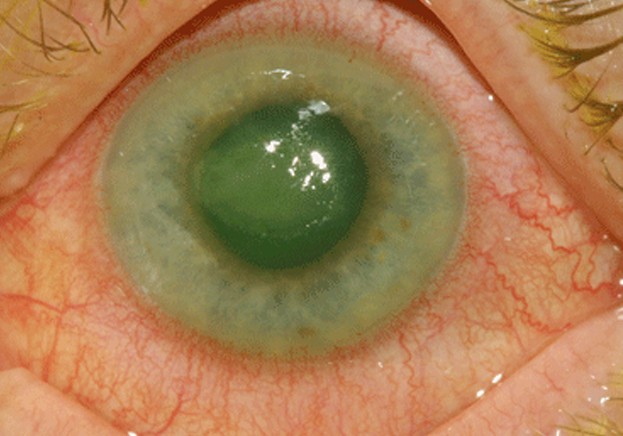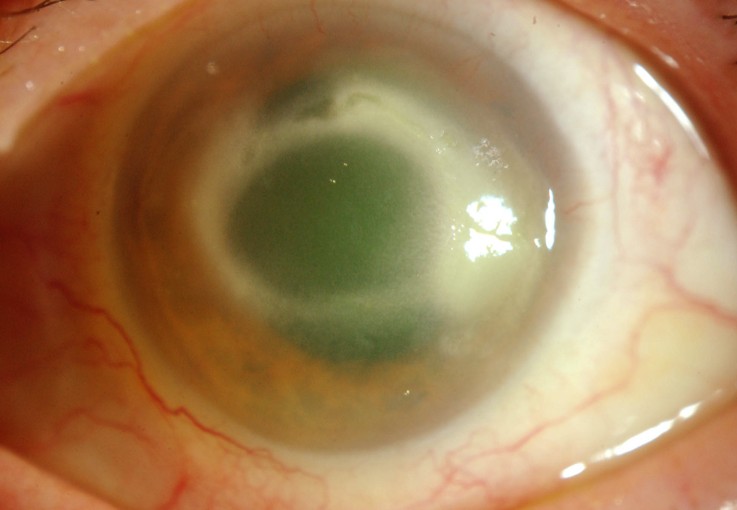Acanthamoeba Keratitis
Acanthamoeba keratitis is an infection that occurs at the level of the eyes, affecting in the majority of the cases those who wear contact lenses. Even though it is believed that this condition affects only those who use contact lenses, there have been many cases reported of people diagnosed with such problems, without wearing such visual aids. The improper handling of the contact lenses and the inadequate hygiene are believed to be primarily responsible for this infection.
How common is Acanthamoeba keratitis?
This is a rare condition, that was first recognized in 1973 and the parasitic infection can threaten the vision. It is very difficult to diagnose and treat.
Symptoms
These are the symptoms of Acanthamoeba keratitis:
- The conjunctiva of the eyes is red
- Intense pain appears in the eyes after the contact lenses are removed
- Excessive tear can occur
- Increased sensitivity to light
- Blurred vision or other changes of vision
- Sensation that there is something in the eye (foreign body sensation)
- Discharge from the eye
- Ring-like ulceration of the corneal tissue
- Edema of the lid can also be presented
- Formation of cataract can occur in more severe cases
Causes
These are the causes that lead to the appearance of Acanthamoeba keratitis:
- Using water from contaminated sources in order to wash the contact lenses
- Cleaning the contact lenses with homemade solutions (containing sodium chloride)
- Improper storage of the cleaning solutions for the contact lenses
- Wearing contact lenses while you are in the hot tub
- Swimming or showering while wearing the contact lenses
- Storing the contact lenses in a dirty case (source of infection)
- The disinfecting substances that are added in the water can actually increase the risk for Acanthamoeba being present in the said water
- The usage of ‘no-rub’ lens care system (increased risk of infection, due to the reduced efficiency of the cleaning and disinfecting of the contact lenses)
- Exposure to the infectious microorganism (often through contaminated water)
- Trauma to the cornea, followed by the exposure to Acanthamoeba
Those who present a compromised immune system are also at risk of developing an infection. The risk is higher in patients who have been diagnosed with the following conditions: AIDS, chronic disease of the liver, organ transplantation, diabetes, systemic lupus erythematosus, cancer and malnutrition.
Diagnosis
The diagnosis of Acanthamoeba keratitis is often difficult to be made and this is the reason why it is also delayed. The doctor will first perform a clinical examination and, if there is the suspicion of an infection with Acanthamoeba, he/she will scrape the involved area of the cornea with a sterile instrument. This diagnosis procedure is performed under topical anesthesia and it allows for the identification of infectious microorganism. The infection with Acanthamoeba can also be diagnosed with the help of confocal microscopy but this does not provide the desired results in all cases.
The early diagnosis is essential in order to maintain a good visual acuity. In general, one of the earliest signs of infection is a specific pattern on the corneal epithelium. Biopsy samples can also be taken in order to confirm the infection with Acanthamoeba. In case that the corneal specimens do not provide the expected results, one can also analyze the contact lenses and the saline solutions used for the cleaning of the lenses. The diagnosis can be complicated by secondary bacterial infections.
Treatment
These are the most common treatments recommended for Acanthamoeba keratitis:
- Antibiotics – in case of secondary bacterial infection
- Antiviral medication
- Antifungal medication
- Antiparasitic medication
- Recommended topical medications include:
- Brolene
- Neomycin-Polymyxin B-Gramicidin
- Polyhexamethylene biguanide (topical cationic antiseptic agent)
- Chlorhexidine
- Voriconazole
- The duration of the treatment might last between six months and a year
- Oral ketoconazole is also recommended
- Topical antimicrobial treatment is administered immediately after the debridement of the cornea, so as to reduce the risk of infection
- Corticosteroids are not recommended, as they can make the condition worse (they inhibit the immune response of the body, allowing for the infection to progress)
- Anti-inflammatory medication can be administered, in order to provide patients with the necessary pain relief; topical cycloplegic solutions can also be administered with the purpose of pain relief
- Surgical intervention might be recommended in the case of corneal perforation
- Penetrating keratoplasty – last alternative, recommended for patients who present significant corneal scarring (useful for restoring visual acuity)
- Corneal transplantation might also be performed in the patients who do not respond to other methods of treatment (however, there is a high risk of the new cornea becoming infected with the same microorganism)
Is Acanthamoeba keratitis contagious?
Acanthamoeba keratitis is a condition caused by an infectious microorganism but this does not mean that the condition is transmitted from one person to the other. As you might have understood by now, the condition mainly appears in those who wear contact lenses. These can be contaminated by the infectious microorganism, as well as the special substances that are used for cleaning. However, the contact lenses should not be shared, as this can definitely increase the risk of contagiousness. The contact lenses should be strictly reserved for individual wear, so there is no risk of spreading the condition to other people.
In conclusion, Acanthamoeba keratitis is a rare condition, with a high risk of serious problems, including loss of vision. If you want to protect yourself against such problems, you need to take good care of your contact lenses. This means that you should always follow the advice of the doctor in regard to the contact lenses care. You should never clean your lenses with tap water, as this might be contaminated with different infectious microorganisms, including Acanthamoeba. In fact, the contact lenses should not be exposed to any kind of water, which makes it essential to take them out if you are entering in the hot tub or you are planning on going swimming. The disinfecting solution should be approved by the doctor and you should avoid using homemade solutions. Never handle your contact lenses with dirty hands, as this too can increase the risk for infection. Always clean your lenses, as soon as you have removed them from your eyes and keep your contact lens case clean as well.
Pictures

